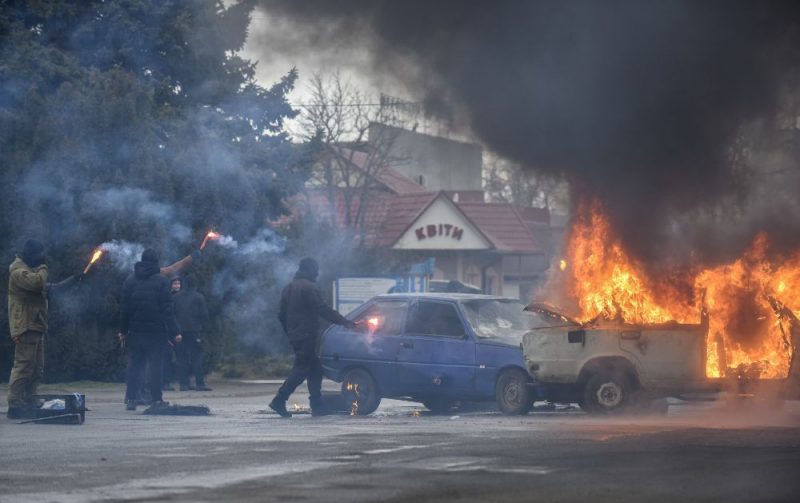The clouds are gathering over the russian economy. After the exclusion of 70% of Russian banks from the Swift Interbank Messaging Networka new sanction seems to be shaking Russia even more: the West’s banning of all transactions with the Russian Central Bank with the aim of freeze his assets.
Concretely, the country no longer has access to part of its savings held by central banks or States in foreign currencies or gold. “Russia is sitting on two financial treasuries. Its reserve with its central bank of 631 billion dollars. And its sovereign fund, which amounts to 185 billion dollars”explains Eric Dor, director of economic studies and professor at the IESEG School of Management in Paris.
Deprived of two-thirds of its financial reserves
The West tapped into the wallet of its first treasure. “In its foreign exchange reserves, it has 131 billion in physical gold. And 500 billion in foreign reserves (in dollars, euros, yuan, etc.). 13% are in the form of yuan (Chinese currency, editor’s note)”, details the economist.
Counting its reserves in yuan (China has not taken punitive measures) and in gold, Russia still has control over a third of its reserves. “Russia can sell its gold, but someone still has to buy it”, notes Catherine Karyotis, professor of finance at Neoma Business School and specialist in securing financial systems. But above all, two thirds of its assets are frozen. “But Putin was counting on these assets to support his currency.”
1 euro for 112 rubles
Indeed, the ruble is collapsing to historic levels against the dollar and the euro. One euro is worth this Monday, February 28 at the end of the day, 112 rubles. When it was worth 93.5 the day before the invasion. In other words, the currency depreciates. “There is a total loss of confidence in the Russian currency in relation to the economic and geopolitical situation”, confirms Catherine Karyotis. Everything the Russians import costs more, so the cost of living increases and contributes to inflation, which was already 8.4% in November.
“Faced with all these bans, depositors got scared and withdrew money en masse, it’s called a bank run. A bank was found to be in default of liquidity leading to the bankruptcy of one of its subsidiaries,” explains Catherine Karyotis.
Faced with the depreciation of the rouble, the Russian central bank raised its key rate from 9.5% to 20%. “This is the rate at which banks finance themselves with the central bank. 20% is huge. This means that borrowing becomes more expensive and mortgage rates go up. In 2021, Russia has already raised its key rates seven times, according to the Treasury.
Read also: How the Russian invasion of Ukraine could destabilize the world economy
The halt in quotations as a sign of a stock market short circuit
Faced with a tripping Russian economy, the Moscow Stock Exchange did not open on Monday, February 28 in the morning. “Russian stock prices have collapsed, so the halt in trading is like a short circuit to avoid a meltdown. That is to say, everyone sells”.
To contain this collapse, the Kremlin released the umbrella, Monday at the end of the day. Residents of Russia will no longer be able to transfer currency abroad. Russian exporters are also ordered to convert 80% of their foreign currency earnings since January 1 into rubles and continue to maintain a ratio of 80% of their monetary assets in rubles in the future.
Russia is a geographical colossus, but on the economic map it does not weigh so heavily. In 2020, the rate of wealth produced within its borders placed it 11th in the world. “The three small Benelux countries (Belgium, the Netherlands and Luxembourg) have a higher GDP than that of Russia”compare Eric Dor.
Read also: Anonymous hackers claim cyberattack on Russian media
Foreign investors chilled
For ten years, the country has also suffered “a probable drop in its potential growth rate (estimated at 1.6% by the IMF), the causes of which are multiple: demographic decline, low labor productivity, lack of availability of employable labour, lack of chronic investment, technological backwardness”explains the general direction of the Treasury.
Added to this, weak foreign investors cooled by acts of corruption and a society dominated by oligarchs. Moreover, in this crisis, “there are surely assets today blocked in tax havens but which could be mobilized by the oligarchs in support of the Russian economy”, glisse Catherine Karyotis.
Russia’s economic strength remains its strong export of hydrocarbons. But it is also its weakness. “The extractive sector in the broad sense representing 20% of GDP, around 40% of federal budget revenues and more than 60% of exports”, indicates the Treasury.
In other words, the source of income is not very diversified. But this financial windfall is dependent on fluctuations in energy prices.
And demand. At a time when the IPCC urges the world reduce its greenhouse gas emissions, Soviet hydrocarbons could go out of fashion. Even more when its Western customers have lost confidence in its supplier.
Russia has not won the war but has already lost citizens’ confidence in its economy.
–


